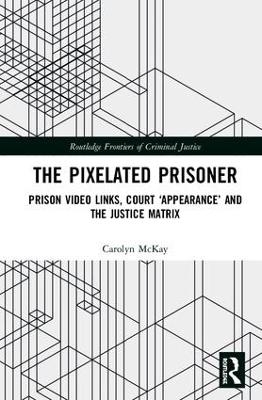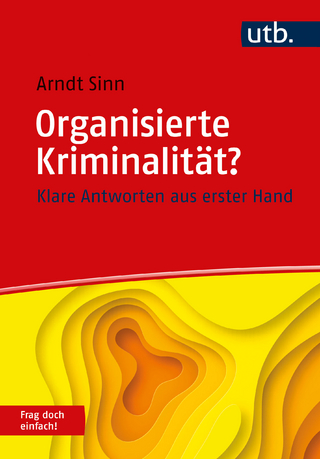
The Pixelated Prisoner
Prison Video Links, Court ‘Appearance’ and the Justice Matrix
Seiten
2018
Routledge (Verlag)
978-1-138-08510-7 (ISBN)
Routledge (Verlag)
978-1-138-08510-7 (ISBN)
This book explores the way in which technological linkages between justice and law enforcement agencies are radically altering criminal process and access to justice for prisoners, and discusses the impact of technology on criminal justice.
Technological linkages between justice and law enforcement agencies are radically altering criminal process and access to justice for prisoners. Video links, integral to an increasingly networked justice matrix, enable the custodial appearance of prisoners in remote courts and are becoming the dominant form of court appearance for incarcerated defendants. This book argues that the incorporation of such technologies into prisons is not without consequence: technologies make a critical difference to prisoners’ experiences of criminal justice.
By focusing on the prison endpoint and engaging with the population most affected by video links – the prisoners themselves – this book interrogates the legal and conceptual shifts brought about by the technology’s displacement of physical court appearance. The central argument is that custodial appearance has created a heightened zone of demarcation between prisoners and courtroom participants. This demarcation is explored through the transformed spatial, corporeal and visual relationships. The cumulative demarcations challenge procedural justice and profoundly recompose prisoners’ legal experiences in ways not necessarily recognised by policy-makers.
Technological linkages between justice and law enforcement agencies are radically altering criminal process and access to justice for prisoners. Video links, integral to an increasingly networked justice matrix, enable the custodial appearance of prisoners in remote courts and are becoming the dominant form of court appearance for incarcerated defendants. This book argues that the incorporation of such technologies into prisons is not without consequence: technologies make a critical difference to prisoners’ experiences of criminal justice.
By focusing on the prison endpoint and engaging with the population most affected by video links – the prisoners themselves – this book interrogates the legal and conceptual shifts brought about by the technology’s displacement of physical court appearance. The central argument is that custodial appearance has created a heightened zone of demarcation between prisoners and courtroom participants. This demarcation is explored through the transformed spatial, corporeal and visual relationships. The cumulative demarcations challenge procedural justice and profoundly recompose prisoners’ legal experiences in ways not necessarily recognised by policy-makers.
Dr Carolyn McKay is a Lecturer in Law at the University of Sydney Law School.
The Pixelated Prisoner: A Prologue, 1. The Justice Matrix: Technologising Criminal Justice, 2. Theoretical Framework: Video Links as Prison Technologies, 3. Researching Video Links in Prison, 4. Video Links: A Spatial Demarcation, 5. Video Links: A Corporeal Demarcation, 6. Video Links: A Visual Demarcation, 7. Technologies and Procedural Justice, 8. An Epilogue: Recommendations, Bibliography
| Erscheinungsdatum | 26.08.2018 |
|---|---|
| Reihe/Serie | Routledge Frontiers of Criminal Justice |
| Zusatzinfo | 4 Tables, black and white; 2 Line drawings, black and white; 7 Halftones, black and white; 9 Illustrations, black and white |
| Verlagsort | London |
| Sprache | englisch |
| Maße | 156 x 234 mm |
| Gewicht | 476 g |
| Themenwelt | Recht / Steuern ► EU / Internationales Recht |
| Recht / Steuern ► Strafrecht ► Kriminologie | |
| Recht / Steuern ► Strafrecht ► Strafverfahrensrecht | |
| Sozialwissenschaften ► Soziologie | |
| ISBN-10 | 1-138-08510-3 / 1138085103 |
| ISBN-13 | 978-1-138-08510-7 / 9781138085107 |
| Zustand | Neuware |
| Haben Sie eine Frage zum Produkt? |
Mehr entdecken
aus dem Bereich
aus dem Bereich
klare Antworten aus erster Hand
Buch | Softcover (2023)
UTB (Verlag)
CHF 27,85


